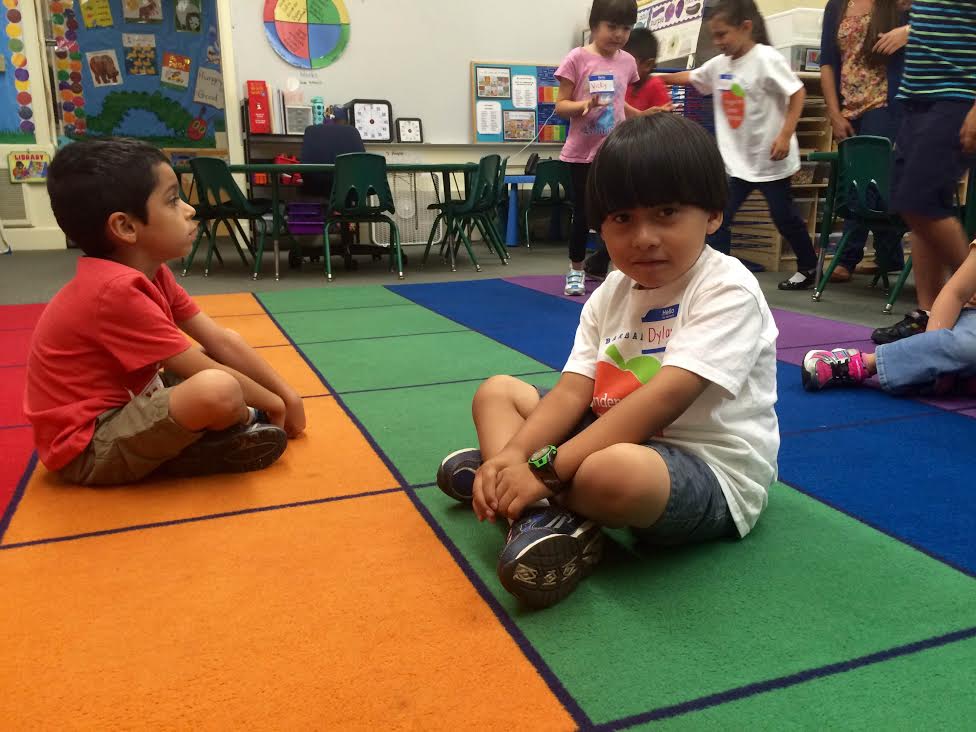United Way Funds Kindergarten Success
Program Reports 40 Percent Improvement in Pre-K Students

Five-year-old Dylan meticulously attaches pieces of bright orange construction paper to a penciled outline of his name, one of the first tasks assigned to his Kindergarten Success Institutes (KSI) class on Thursday morning, August 13th. Transitional kindergarten teacher Julene Armstrong devised the project to teach the kids to write their own names; at the moment, however, Dylan seems more concerned with the difficulty of prying the scraps from his gluestick and fingers so that the pieces make their way to his template.

KSI classes operate at various south Santa Barbara County elementary schools about three to four weeks before the start of the school year each summer to prepare four- and five-year-old students to enter kindergarten classes in the fall. Armstrong’s class at Harding Elementary School is part of the program’s second one-week session, which meets Monday through Friday from 9 a.m. to 12 p.m. each morning.
Community Impact Officer Melinda Hodge visited the class that Thursday on behalf of United Way of Santa Barbara, which funds the KSI program. About 15 years ago, she said, local kindergarten teachers and school administrators began noticing a gap in preparedness between students who had spent time in preschool and those who had minimal experience in such a structured environment. United Way found that these students often come from low-income families with limited access to or awareness of early childhood educational opportunities like preschool. The KSI program is designed to “even the playing field” by teaching typical school day routines and easing students into parental separation for hours as a time. “Social-emotional growth is most important” as the kids complete the program, Hodge tells me.
According to Armstrong, KSI curriculum includes basic skills like letter recognition, writing one’s name, and knowledge of basic shapes, colors, and numbers. This skill development can be especially vital for the reported 90 percent of program enrollees who are “Latino and just learning the English language,” according to the United Way website. When I ask Dylan how old he is, it takes him a moment to respond, “I have five,” as one might express age in Spanish. Four-year-old Sofia, on the other hand, quietly corrects her teacher’s compliment on the “purple” paper that she chose for her project. “It’s magenta,” Sofia clarifies.
Currently, United Way reports that approximately half of all incoming kindergarteners in the Santa Barbara Unified School District arrive unprepared at the start of the school year. KSI students improve their skills at an average rate of 40 percent by the time school starts. Hodge said that though most local schools use United Way funding to sponsor summer programs, some opt instead for an interventionary program during the school year to get struggling students up to speed. In either case, transitionary measures are taken with district-wide kindergarten classes at the start of the academic year as well. Armstrong said teachers spend the first few weeks assessing kindergarteners’ skills during continued half days of instruction. Eventually, the half days become full days, and teachers use their assessments to set goals with parents to keep them involved in their children’s progress.
If five-year-old Alexa is any indication, KSI seems to accomplish its goals to increase both student and parent investment in primary education. “I like school,” she says while enthusiastically kneading red Play Doh. “My mom likes school too.”


